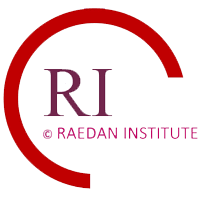By Amreen Pathan
“A word after a word after a word is power.” – Margaret Atwood.
Reading is a right – and one that should be universal. Unfortunately, though, universal it is not.
- According to UNICEF, a staggering 617 million children around the world do not reach minimum proficiency levels in reading despite two thirds of them attending school.
- The National Literacy Trust shared that one in eight children from disadvantaged backgrounds do not have a book of their own at home.
This data is bleak. But the extent of this bleakness is something we can picture only by picturing the power of proficient literacy.
Consider what reading means to you.
For me, reading conjures up warm memories of a childhood-spent neck-deep in worlds that bridged gaps between imagination and real life. My siblings and I didn’t need a television or technology to keep us entertained or up late at night – books held that power over me. I vividly remember desperately peering at the lines of a book after lights out, desperate to devour the story in the span of a day – my glasses pay testament to this today. The smell of new books makes even my adult heart flutter and I consider myself a proud bibliomaniac. I know I am a teacher of English today because books spoke to me. Thankfully, I was encouraged to speak back.
Atwood is not wrong when she characterises words as powers.
What happens when reading and literacy is not proficient?
Children with lower reading ages struggle as much in maths and science at GCSE as they do in English and other Arts research by GL Assessment has shown. Reading is not only important for English. A strong reading ability is required to unlock understanding and competency in all aspects of a traditional school curriculum.
Reading is also important for creativity. Creativity is one of the highest cognitive functions of the human brain and as such sits at the very top of Bloom’s Taxonomy’s hierarchy ordering of cognitive skills. Suffice to say, reading has been ‘intuitively connected with creative activities that foster creative thinking.’ This is because reading encourages a process of self-discovery through an application of the decoding and critical skills required to actually read.
There are countless other reasons that reading is important and not all of them are about academic performance. They are probably even more important than the ones driven by a pupil’s competency in school subjects. Reading gives greater human insight and broadens our perspectives. It forces us to challenge our stereotypes and fosters a sense of belonging.
Take earning potential as another – albeit a less humanistic – example. In 2014, the Read on. Get on. (ROGO) coalition working to get every child in the UK reading by the age of 11 revealed that people earning less than £10,000 per annum were not ‘functionally literate.’ This implies a depressing link between reading and poverty.
So what can we do to improve pupil literacy and reading?
A parent approach
I’ll keep it short and sweet and share just the three-pointers I recommend to parents of my own pupils who seek recommendations.
- Starting with the most obvious one: read. You can read to/with your younger ones of course but also encourage reading with older ones. Research carried out by the Department for Education suggests that reading for pleasure increases attainment levels. Take trips to the library; buy books (there are a wealth of second hand shops that sell preloved books cheaply); encourage reading of non-fiction including articles and blogs online. Audiobooks are a lovely way to get children immersed in more difficult books. Many are available freely online! Don’t worry about the quality of the books – they don’t have to be Dickens or Shakespeare. Just make regular reading a habit.
- Talk to your child (young and old). Literacy is the ability to read, write, speak and listen in a way that lets us communicate effectively and make sense of the world. Pupil oracy is poor in the class so ask them what they did at school, ask them why, encourage their questions, have conversations over dinner, pick a topic and give them time to think or read about it.
- Meet with your child’s teacher. This is a great opportunity to express concerns (if you have any) or work out how best to challenge your child. Teacher recommendations will prove to be insightful, as they should have picked up on your child’s strengths and weaknesses in terms of reading and literacy. Hopefully you can come away with strategies (and reading material options) to implement in your own home.
An educator approach
As a teacher, I return to this document again and again published by the charity Education Endowment Fund (EEF) working to assist schools in raising attainment and closing the disadvantage gap between the ‘reading rich and poor.’
Allow me to summarise the top seven recommendations here for you:
- Prioritising disciplinary (subject specific) literacy within the specified subject.
- Provide explicit vocabulary instruction.
- Teach strategies to help break down the reading of challenging texts.
- Chunk or break down writing tasks.
- Combine reading and writing tasks.
- Plan structured talks into the lesson.
- Interject with well-planned literacy interventions for struggling pupils.
I think the most important thing to realise for an educator is that the teaching and development of literacy and reading skills should not be limited to teachers of English and in the English classrooms. The above EEF recommendations refer to disciplinary literacy, which highlights the relevance of literacy in each subject. Literacy in History, Science, Maths, etc. matters.
‘Closing the Reading Gap’ by Alex Quigley also comes highly recommended. I myself am in the process of completing this and can second this recommendation just halfway through.
What books, strategies or recommendations do you have to help falling literacy levels and close the reading gap for disadvantaged pupils?
#Reading #Literacy #ReadingGap #Books



(2) Comments